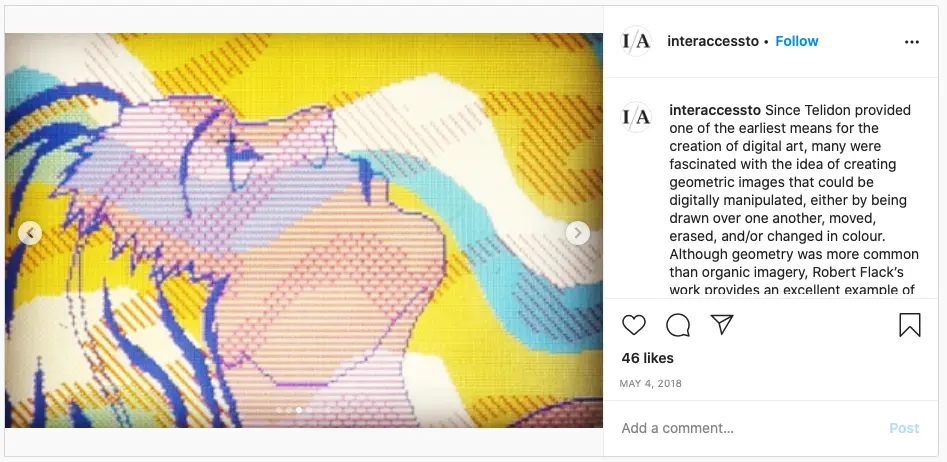Abstract
This essay describes the collection of early digital art at the Toronto-based Inter/Access gallery and studio.
This artwork was created on Telidon systems, a pre-web telecommunication system from the early 1980s sponsored by the Canadian federal government, more advanced but similar to Videotex. During its trial period in Canada, Telidon connected TV terminals with central servers through phone lines for services like shopping, banking, booking travel, and entertainment. The Canadian government sponsored artists to create and distribute interactive art on Telidon. The trial run - and the whole system - was canceled in 1985. The artwork was presumed lost.

Figure 1: An Instagram with Telidon artwork post on the Inter/Access channel. Source: https://www.instagram.com/p/BiXJuo_nOiK/?taken-by=interaccessto (retrieved on April 2, 2020)
In 2015, recordings of Telidon artwork resurfaced in Canada. Inter/Access collected as many of the pieces as possible and found the original artists. Then, they organized an unconventional exhibition befitting digital art: #telidon is an Instagram social media campaign celebrating the pioneering artists who used Telidon by posting digital reproductions of analog recordings of their digital art. Each week from April to June 2018, the Inter/Access gallery posted stills and videos of Telidon art on their Instagram account @interaccess to map the history of Telidon technology and explore its influence on early digital media art practice in Canada.
In 2018, the University of Victoria Libraries restored Telidon data files from the estate of Glenn Howarth and developed a method to display the protocol of the original graphics on modern-day hardware.
This is the story of the Telidon system, the artists who worked with it, the unlikely story of how their work was rediscovered, and how to conserve digital artwork created with Telidon.